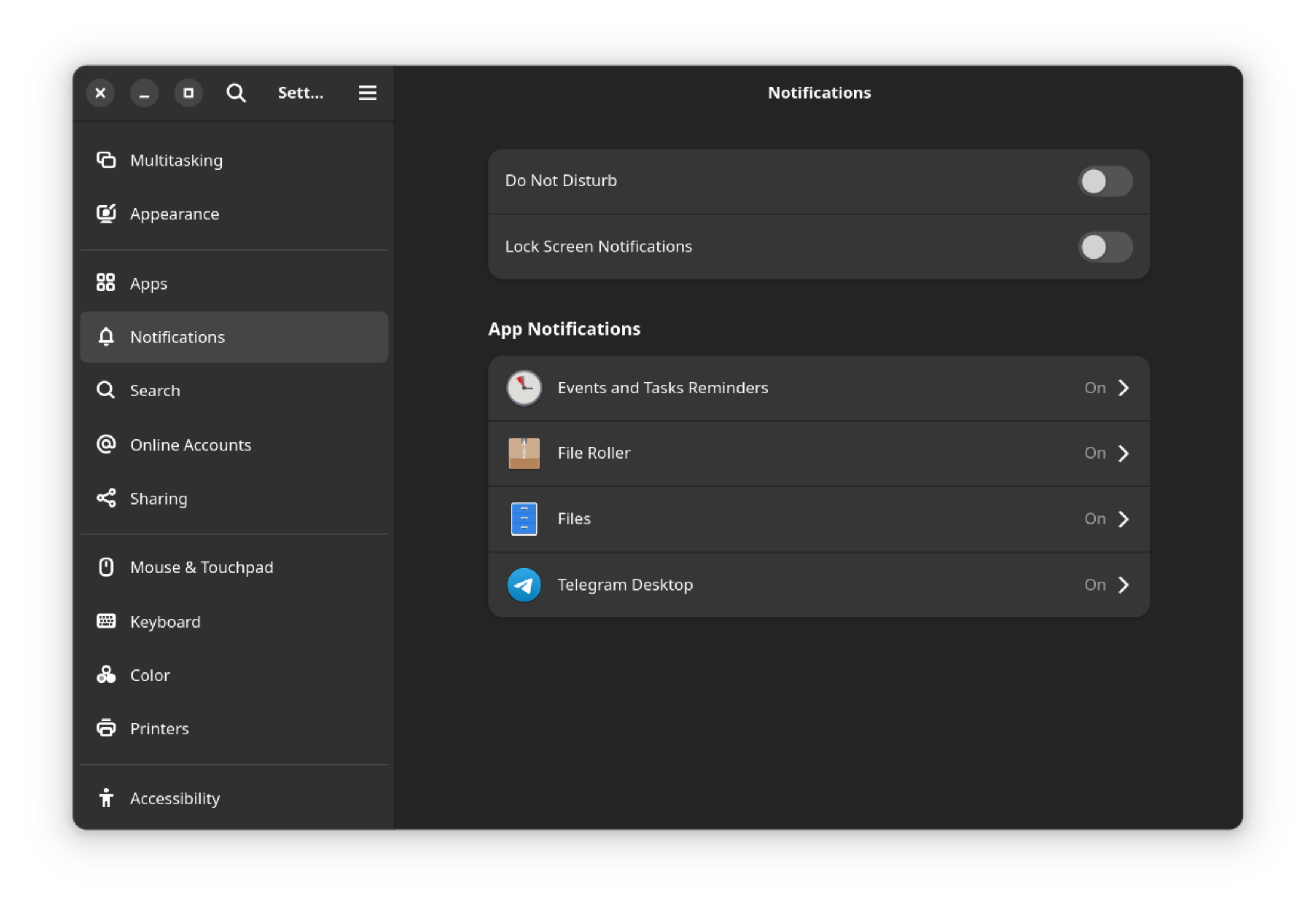yeah, the over-crowdedness is only in the settings app, "normal" apps look fine
enviousCardinal
you mean that they're on the left or what...? like 'em just fine there, I'm a macOS convert.
thanks for reaching out. I think I tried it (tried a number of KWin scripts, including the one called Rectangle) but I'll look at it again. can I tile my workspace in six areas (top/bot + left/mid/right) and hotkey-send windows to each of those and then cycle widths on repeat keypresses?
same boat. was on GNOME and used gTile over there; once the (cumbersome) setup was done, worked as expected, especially the cycle function (cycle between 1/3, 1/2, and 2/3 on repeated keypresses).
now I'm on Plasma and there isn't anything worthwhile; tried a couple of solutions but most of those are of the auto-tile kind where the WM "guesses" what you want and then you adjust it, which is beyond asinine to me. I have a huge screen and I want to send this window do this quarter and this to this sixth and this to half and so on.
anyhow, none have what I need, so I learned to live without it.
edit: found the exact one I needed - Better Quick Tiles for Plasma 6. does exactly what I need, including alternating between 1/3, 1/2, 2/3.
I've outlined the steps you have to take in my 1st post. basically, add swap, add resume to loader, rebuild initramfs, selinux policies, trick systemd to ignore absent swap (it gets activated on suspend) and that's pretty much it. then once systemctl hibernate works, switch suspend with suspend-then-resume system wide; optional, if you don't want that (spoiler: you do want that).
first made it work on fedora (linked post in my previous reply) and then recreated it in Arch with copious help from the wiki; not much different except mkinitcpio instead of dracut. then redid it in debian first with GRUB and then replaced it with systemd-boot.
maybe do a step-by-step writeup one of these days if I find the time.
it is insanely cumbersome to achieve this, but it is doable and once set up, it runs like a dream. I've got it on a T480s (F40), T420s (Arch), MBP 2010 (Debian 12) and MBPr 2012 (F39), all with encrypted LVM + btrfs, some with a swap subvolume, some with a separate swap partition outside of LVM (waaay faster boot, no decrypt prompt - dreamboat!)
basically you have to allocate a swap file, subvolume, or partition that's RAM * 1.5 (on account of zram) but don't add it to fstab. then you have to dick around with systemd scripts that turn off zram and activate swap on suspend and do the reverse on resume. then, dracut or mkinitcpio have to be set up to use the resume funcionality (when coldbooting it looks for the resume swap file and if present restores this instead of booting). also, there's adding kernel switches to systemd-boot or GRUB to utilise resume.
edit: oh yeah, also taming selinux to allow you to write to said swap.
now that would be just enabling hibernation, but I don't like explicitly activating suspend or hibernate, I wan't it to hibernate after I've left it in suspend for a while; I've set it to 60 mins. that way I don't have to think about it, just use my laptop like it's actually 2024.
also, since you're now coldbooting several times per day, it's essential that this process is as fast and jerkless as possible, hence systemd-boot with all pauses and timeouts set to zero.
the steps involved depend on your distro, I've made it work with Fedora, Arch and Debian. Here's a good primer so take it from there and use the arch wiki and experiment.
not related to longer battery life per se, but suspend-then-hibernate is the number one improvement to my daily use. the laptop suspends normally and if not woken in an hour, it suspends to disk. upon wake it restores from the swap file/partition. zero battery drain when off, resume from hibernate is faster than cold boot. I can go days without a charger; the other day I've "woken" it after like 10 days and did a full system upgrade - the battery and everything else was how I left it. after I was done, just closed it and left it.
my laptop is my secondary workstation and it's not rare that I don't touch it for days. it sucks major balls when I have to urgently leave and find out it's depleted.
with systemd-boot and a fast and seamless boot process, this is as close as it gets to stuff Macbooks had more than 10 years ago.
you hafta use the play store version on a device with google services (or ios), no foss app and no desktop app
I'm using it as a currency to buy my food, pay my insurance, pay for my phone bill, etc.So what happens is since I have to pay bills in it, I end up buying it every single month and then spending
how do you do all them things, if it's not too much trouble?

the circles and whatnot, I didn't customize nothing there; minimal gnome shell install, activated the max/min buttons and moved them to the left. why I need them and need them there isn't important.